Also read: best free mlops platforms in 2025
Understanding Sales Gamification
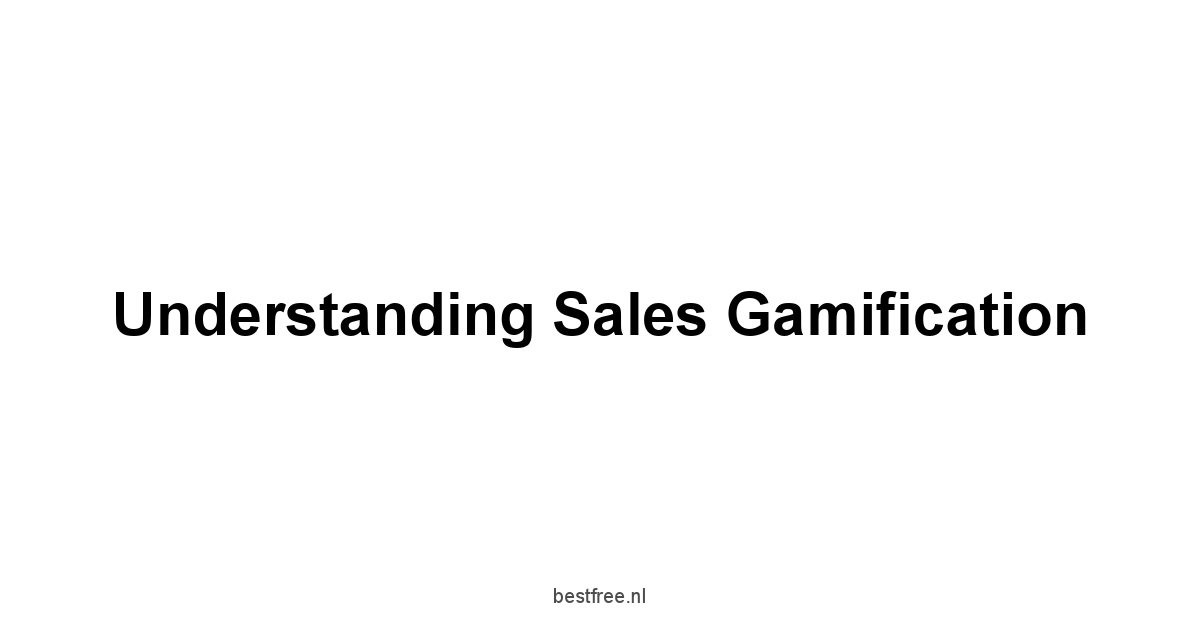
Sales gamification applies game mechanics in sales to boost engagement, performance, and productivity among sales reps.
By adding gaming elements—like points, badges, and leaderboards—companies aim to make sales activities more engaging and enjoyable.
This method turns dull tasks into competition, motivating sales reps to improve.
Successful gamification changes how a sales team functions, fostering motivation, enhancing interactions, and producing results.
The core principles of sales gamification rest on understanding human behavior.
Key elements include clear objectives, feedback loops, and team collaboration.
Sales gamification provides a structured method, aligning individual efforts with company goals.
By encouraging healthy competition and recognizing achievements, sales gamification benefits both the business and the engagement of sales professionals.
This cycle of shared goals and motivation drives continuous improvement for both the organization and individuals.
Definition and Core Principles
-
Game Mechanics in Sales: Points, leaderboards, and levels integrate into sales processes to drive engagement.
-
Engagement and Motivation: The framework encourages active and enthusiastic participation from sales representatives, using incentives to drive performance.
-
Competition and Collaboration: Healthy competition is fostered within a team-based framework, creating camaraderie among sales reps.
-
Feedback Loops: Feedback reinforces positive behavior and encourages continuous learning and improvement.
Importance in Modern Sales Strategies
Gamification offers a new way to engage workers who may feel disconnected from their tasks.
When sales reps see their efforts measured through points and recognition, their motivation to perform increases.
Psychological Motivators at Play
Understanding psychological factors in sales gamification is key to effective strategies.
Intrinsic motivation comes from engaging in tasks that are rewarding.
This may include the satisfaction of closing a deal or mastering a skill.
Extrinsic motivation involves external rewards like bonuses and recognition.
Balancing these motivators makes gamification effective.
-
Intrinsic Motivators:
- Skill mastery: Sales reps gain confidence.
- Purpose: A sense of fulfillment from achieving significant goals.
-
Extrinsic Motivators:
- Monetary rewards: Bonuses linked to performance can inspire action.
- Recognition: Public acknowledgment can spark competition among peers.
Blending these motivational elements drives engagement and performance effectively.
Also read: 7 beste gratis takenbeheerapps
Top Features of Sales Gamification Software
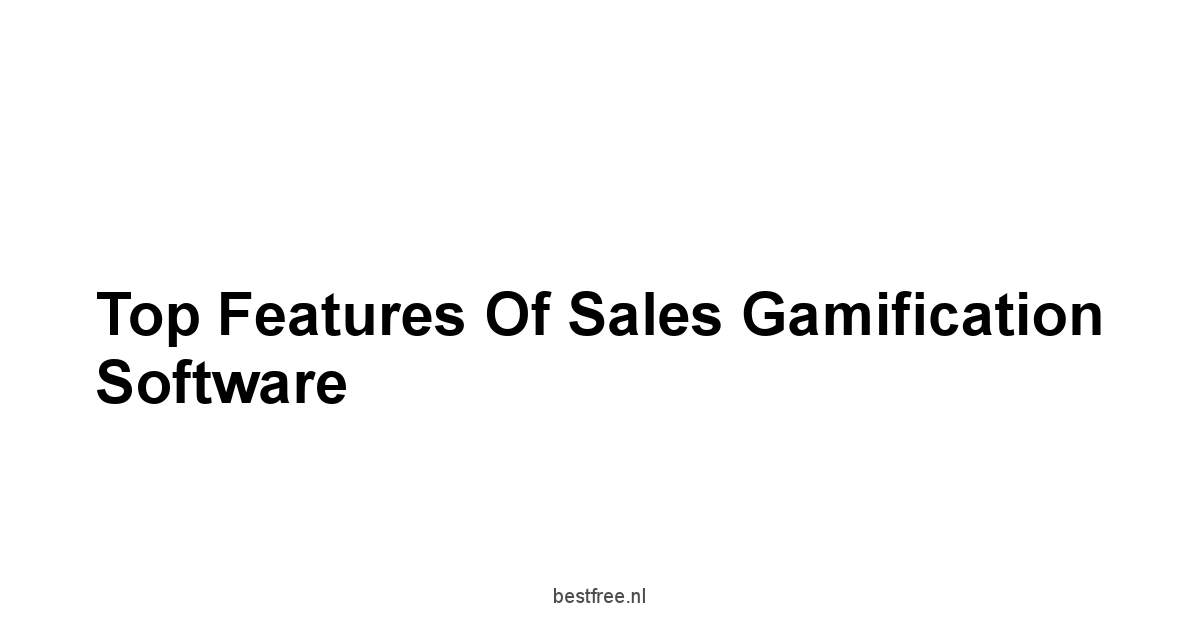
Effective sales gamification software merges features that boost user experience while driving engagement and productivity among sales teams.
As organizations seek tools to weave gamification into their sales process, grasping these features is vital for sound decisions.
Sales gamification software must offer a visual display of performance through clear leaderboards and integrate reward systems that motivate desired behaviors.
These features provide continuous motivation for sales teams to reach their goals while tracking their individual contributions.
Moreover, the software should allow customization for different team dynamics or specific cultures, crafting a more fitting environment for each sales rep.
Customizable Leaderboards
Customizable leaderboards are essential in sales gamification, visually presenting sales performance to spark competition.
These leaderboards can reflect specific key performance indicators KPIs, aligning them with the team’s objectives.
-
Dynamic Display: Real-time updates let teams track progress and standings through the sales cycle.
-
Segmentation Options: Leaderboards can show results by region, team, or individual metrics, ensuring friendly competition remains engaging.
-
Friendly Competition: Highlighting top performers can spur lower-performing sales reps to increase their activity in hopes of advancing.
Studies show that companies using customizable leaderboards see an increase of up to 30% in overall sales performance due to raised motivation levels among staff.
Reward Systems and Incentives
The success of gamification depends greatly on effective reward systems.
These systems drive participation and inspire sales reps to exceed targets.
-
Types of Rewards:
- Monetary: Cash bonuses and financial awards tied to performance.
- Experiential: Unique experiences, such as trips or outings for top performers.
- Recognition: Acknowledgment among peers often motivates sales reps more than cash.
-
Structuring Contests: Organized competitions create excitement. For example, reps earn points through engaging contests, gaining rewards for surpassing monthly goals.
Strategic use of rewards in gamification links to increased productivity. Recent findings suggest a well-crafted reward structure can lead to 50% improvements in sales performance metrics.
Points, Badges, and Recognition
A core aspect of any gamification strategy is points, badges, and recognition, elements that energize the sales process.
-
Points Systems:
- Earning points for tasks, such as closing sales or generating leads, establishes success criteria that reps can track.
- Points may convert to rewards, allowing sales reps to select incentives that suit their preferences.
-
Badges as Achievements:
- Badges act as virtual trophies, acknowledging milestones like “Top Closer” or “Most Improved.”
- Badges highlight accomplishments and appear on leaderboards, promoting ongoing engagement.
-
Overall Recognition:
- A thorough recognition system sustains team motivation and reinforces individual contributions.
Statistics reveal that organizations adopting badges and points report a 45% increase in engagement levels, proving their effectiveness in keeping sales teams committed to performance.
Also read: 5 beste gratis pdf bewerkers
Key Benefits of Sales Gamification
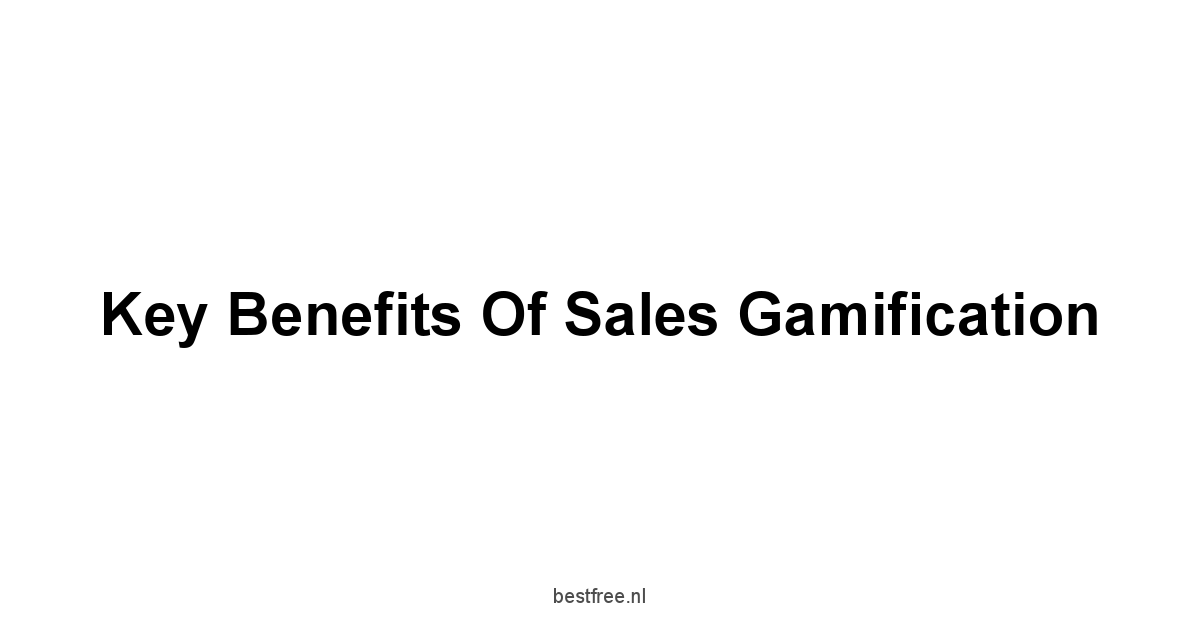
Sales gamification brings many benefits. It can change a company’s sales performance.
Sales gamification goes beyond old incentive strategies. It creates a team environment that is engaging and collaborative.
This change boosts productivity and fosters a culture where achievements matter.
By using gamification, companies see results that drive growth and sustainability.
Enhanced Employee Engagement
Gamification raises the morale and motivation of workers.
-
Visualization of Progress: Sales reps see their progress on leaderboards or through points, increasing their sense of accomplishment.
-
Fun and Excitement: The game-like atmosphere brings excitement to work, making daily tasks enjoyable and reducing turnover.
One study found that gamification led to a 41% increase in employee engagement, changing the sales culture for the better.
Increased Sales Performance
Sales performance is the key metric to judge gamification success.
Data shows companies that use gamification thrive in improving their sales figures.
-
Accelerated Closing Rates: Competitive environments push sales reps to close deals faster, increasing revenue.
-
Consistent Motivation: Ongoing challenges keep sales teams engaged, reducing stagnation.
Research indicates that businesses applying effective gamification can see a 25% increase in sales performance within the first year.
Improved Team Collaboration
Collaboration is often overlooked in sales.
Gamification can improve teamwork among members.
-
Group Challenges: Team challenges unite sales reps to reach shared goals, building teamwork.
-
Peer Recognition: This fosters an environment where sales reps motivate each other, enhancing recognition.
Strong collaboration builds better team dynamics and boosts productivity. Reports show that companies using collaborative gamification strategies see a 34% improvement in teamwork dynamics.
Also read: best free ai code generation software in 2025
Essential Gamification Strategies for Sales Teams
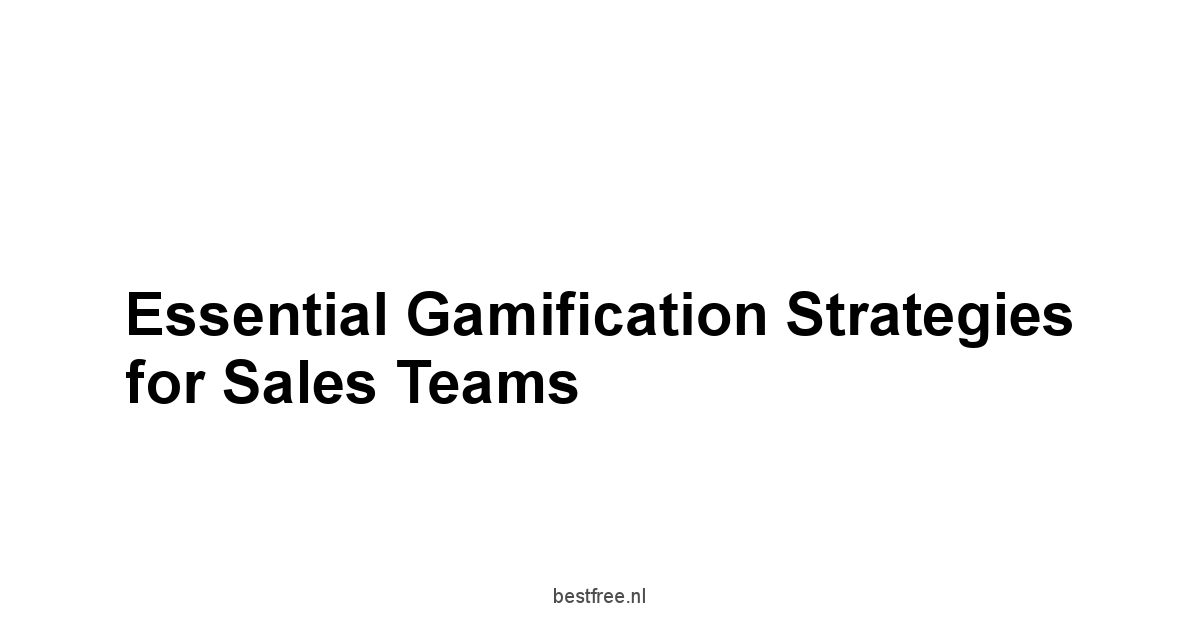
To implement gamification in sales, organizations must develop strategies that link gamification elements with team objectives.
Well-defined strategies help sales teams tackle challenges while staying engaged and motivated.
Organizations must consider individual preferences and team dynamics when crafting these strategies.
Striking the right balance ensures all team members find value in gamification initiatives.
Setting Clear Goals and Objectives
Setting clear, attainable goals is vital for successful gamification strategies.
These objectives guide sales reps toward desired actions and outcomes.
-
SMART Criteria: Goals must be Specific, Measurable, Achievable, Relevant, and Time-bound for clarity and focus.
-
Progress Monitoring: Regular assessment of goals ensures smooth tracking for adjustments to keep motivation high.
Research shows that companies with clear performance goals improve by 50% compared to those without clarity in their objectives.
Implementing Missions and Challenges
To keep sales reps engaged, organizations should include missions and challenges in their sales gamification strategies.
-
Short-term Missions: Break larger sales targets into smaller, manageable missions that sales reps can tackle daily or weekly.
-
Team Challenges: Activities requiring collaborative efforts motivate cooperation and collective achievement.
A gamified system with missions and challenges fosters urgency and purpose among sales representatives, leading to greater engagement levels.
Leveraging Social Interaction and Teamwork
Social interaction is crucial for successful sales gamification.
Organizations that promote teamwork create environments where motivation thrives.
-
Team-based Competitions: Group challenges align personal interests with collective goals, fostering a sense of accomplishment.
-
Peer-to-Peer Recognition: Strategies allowing employees to acknowledge each other’s achievements promote camaraderie and support.
Organizations that enhance social interaction through gamification see significant improvements in team cohesion, resulting in a 25% boost in productivity.
Also read: 7 beste gratis website hostingdiensten
Leading Sales Gamification Software in 2025
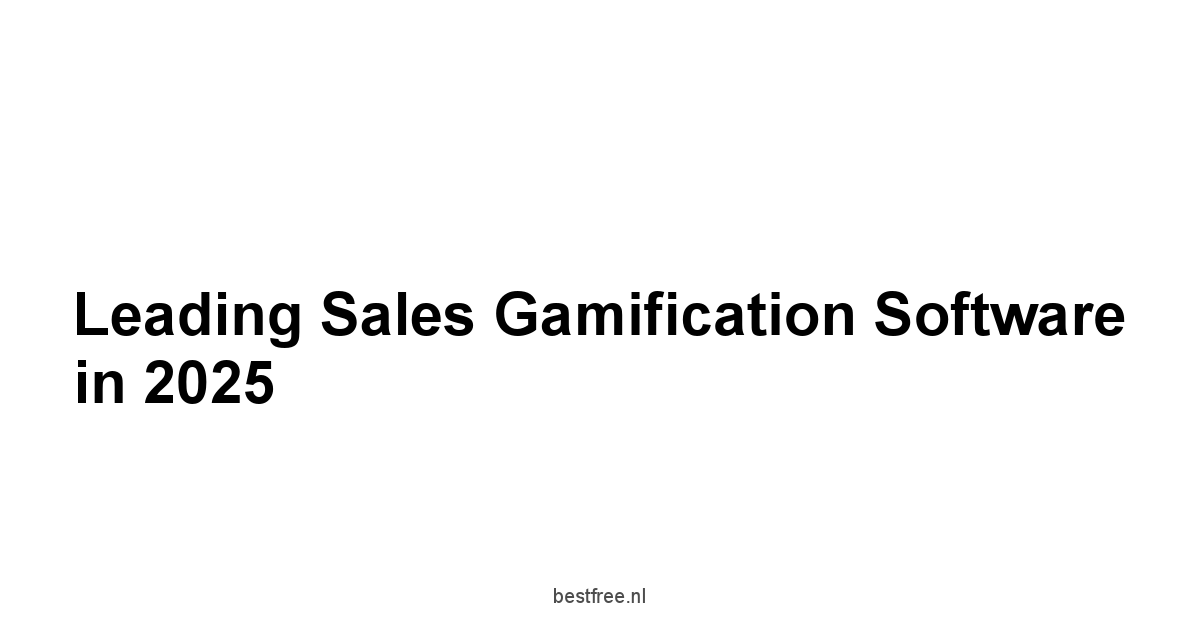
Gamification evolves. Several software options will dominate the market in 2025. Each platform holds unique strengths for sales organizations.
Choosing the right software is vital for successful gamification.
Consider ease of use, integration with existing systems, and how well it aligns with organizational goals.
Overview of Spinify
Spinify empowers sales teams with engaging gamification.
It integrates seamlessly into CRM systems, turning competitive settings into robust sales ecosystems.
- Dynamic Leaderboards: Real-time metrics keep sales reps aware of their standings and competition.
- Customizable Challenges: Tailored missions reflect sales teams’ objectives, fostering engagement.
Businesses report up to a 40% increase in team motivation after implementing Spinify.
Features of Centrical
Centrical stands out in sales gamification.
It offers a complete suite of tools, enhancing training and performance.
- Integrated Learning: Training is built into gamification, recognizing reps while improving their skills.
- Real-Time Feedback: Immediate assessments provide critical insights for sales reps.
Centrical gains traction, with over 70% of users noting higher engagement using its features.
Capabilities of MindTickle
MindTickle combines gamification with sales enablement.
- Immersive Learning: Training simulates real-world scenarios, prepping sales professionals.
- Collaborative Tools: Team challenges and peer recognition add layers of engagement.
Results show a 60% improvement in new hire performance over traditional onboarding with MindTickle.
Also read: 5 best free vpns
The Role of Analytics in Sales Gamification

Analytics and data are vital for success in sales gamification.
Tracking metrics and measuring engagement help organizations make informed decisions that drive success.
Sales gamification involves more than game mechanics; it requires measuring effectiveness.
Understanding how strategies affect performance helps leaders identify what works and what does not.
By using analytics, organizations can refine their approach, ensuring better results and sustained engagement.
Tracking Performance Metrics
Performance metrics form the basis for evaluating sales gamification efforts.
-
Key Indicators: Important KPIs include total sales revenue, conversion rates, and sales cycle times that assess effectiveness.
-
Benchmarking: Comparing metrics to historical data helps organizations find areas for improvement and recognize successes.
Studies show that those who track performance see up to a 20% increase in sales effectiveness because of better insights.
Measuring Engagement and Participation
Evaluating engagement and participation levels is essential for assessing the success of gamification systems.
-
Participation Rates: Metrics like login frequency and contest participation offer insights into user engagement.
-
Feedback: Gathering qualitative insights from surveys and focus groups helps tailor gamification strategies to team needs.
Organizations focused on engagement report a 30% rise in participation levels, showing the link between gamification and engagement.
Analyzing Feedback for Continuous Improvement
Feedback analysis is key to optimizing sales gamification efforts.
-
Continuous Adaptation: Regular data reviews help teams adjust their strategies for effectiveness and engagement.
-
Sales Rep Involvement: Encouraging sales reps to share their views creates a sense of ownership in the gamification process.
Using feedback properly can lead to significant gains. Recent reports show that organizations emphasizing feedback mechanisms notice a 25% boost in employee satisfaction levels.
Also read: 8 best free time tracking software
Overcoming Challenges in Sales Gamification
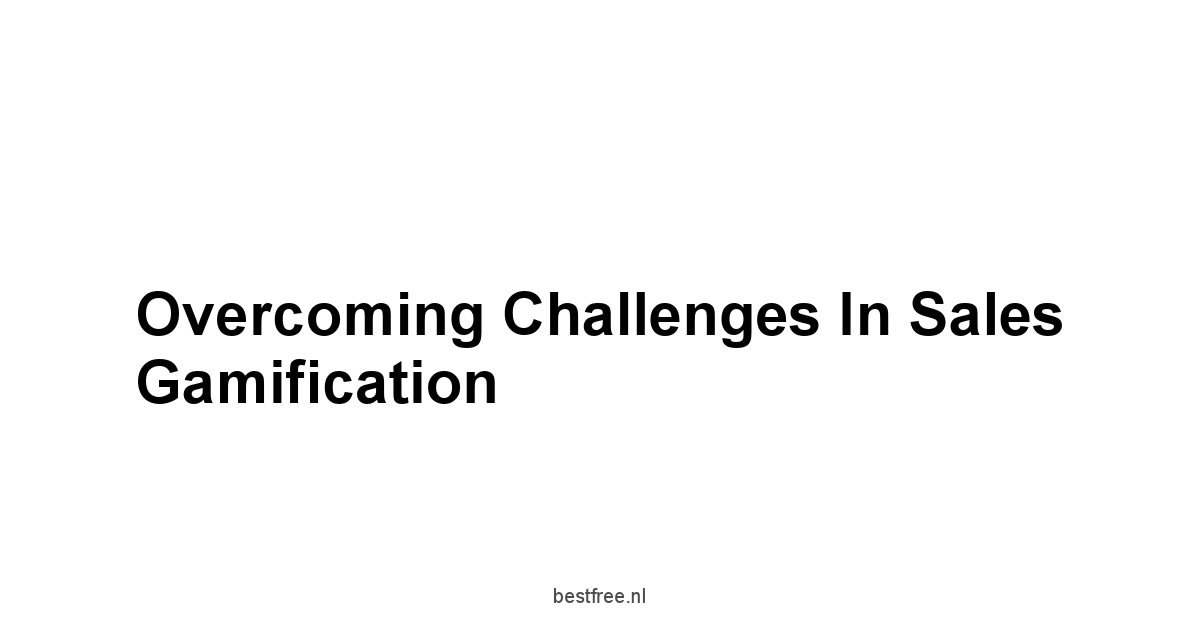
Sales gamification brings benefits, yet challenges arise in implementation.
Addressing these can ease the path and boost user adoption.
Strong leadership and clear communication are essential for a successful gamification strategy.
By recognizing potential pitfalls and adopting a flexible approach, businesses can navigate the complexities of sales gamification.
Addressing Resistance from Sales Teams
Sales reps may resist gamification, seeing it as added pressure.
Organizations must clearly express the benefits of their gamification efforts.
-
Education and Training: Comprehensive onboarding shows how gamification improves daily tasks and eases concerns.
-
Highlighting Success Stories: Sharing triumphs from teams succeeding with gamification highlights its value and dispels doubts.
Education can lessen resistance, boosting participation rates by up to 40%.
Aligning Gamification with Business Goals
Aligning gamification with business objectives is vital.
Misalignment breeds confusion among sales reps.
-
Defining Specific Outcomes: Clear objectives that connect individual and organizational goals create effective gamification strategies.
-
Measuring Impact: Regular evaluations ensure results meet initial goals, building a culture of accountability.
Aligned strategies often lead to improvements of 30% in achievement levels over time.
Ensuring Sustainable Engagement
Maintaining engagement with gamification can be challenging, especially long-term.
-
Varied Game Features: Regularly introducing new challenges keeps interest alive.
-
Fostering Community: Promoting social interactions among sales reps encourages them to work together toward shared goals.
Regular updates to gamification elements can sustain engagement, with organizations reporting 20% decreases in churn rates through such practices.
Also read: best free citrix consulting services in 2025
Future Trends in Sales Gamification
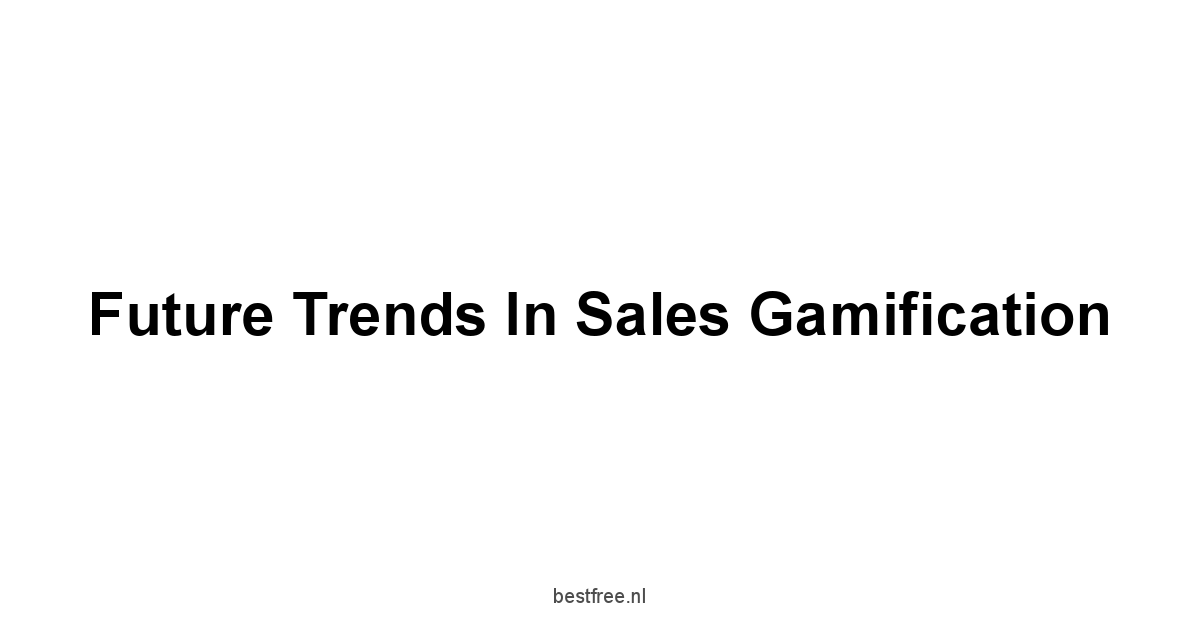
Companies that adapt will find long-term success.
Understanding trends helps organizations identify investment and innovation opportunities.
By anticipating shifts in sales practices, businesses can stay flexible and refine their gamification strategies.
Growth of AI-Driven Gamification Solutions
Artificial intelligence AI stands to reshape gamification in sales for 2025 and after.
-
Adaptive Learning: AI analyzes individual performance, creating tailored learning paths that improve outcomes.
-
Behavior Prediction: AI predicts engagement areas from historical data, letting companies optimize gamified elements swiftly.
AI-driven gamification can positively impact engagement, with a 60% boost in user satisfaction noted among firms using AI features.
The Shift Towards Remote and Hybrid Sales Teams
The rise of remote and hybrid work requires a fresh look at gamification strategies.
-
Emphasis on Digital Interaction: Gamification tools must create engaging interactions in virtual settings, enhancing communication with gamified features.
-
Inclusive Culture: Making sure gamification works for remote work keeps employees fulfilled and satisfied.
Adapting to hybrid models can foster positive employee experiences, driving 40% engagement rates among diverse teams.
Emerging Technologies Enhancing Gamification
-
Virtual Reality VR: Immersive training environments are growing, enhancing engagement in unique ways.
-
Mobile Platforms: Accessibility allows sales reps to engage with gamified elements anytime, anywhere.
Using new technologies can enhance engagement, with innovative firms reporting a 50% increase in user experience satisfaction through advanced tools.
Also read: 6 best free barcode generators
Best Practices for Implementing Gamification
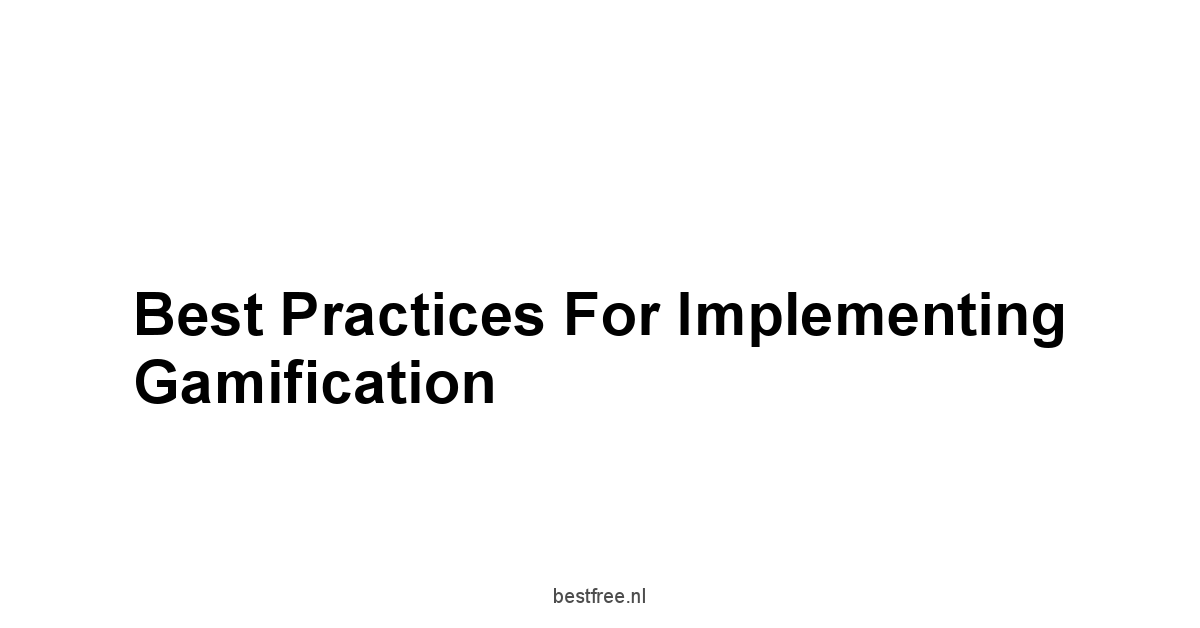
To reap the rewards of sales gamification, organizations must embrace best practices that refine implementation.
Creating a strategic framework for gamification aligns all stakeholders toward specific goals that enhance performance and satisfaction.
These practices lay the groundwork for enduring gamification initiatives.
Creating a Supportive Culture
A strong culture fuels gamification success.
Organizations must weave gamification into their core values.
-
Encouragement of Participation: Sales management should consistently highlight gamification benefits and celebrate wins to spark engagement.
-
Open Communication: Clear communication on gamification goals helps team members grasp their roles.
Supportive cultures often see operations flow smoothly, with employee engagement rising by up to 36%.
Training and Onboarding for New Tools
Seamless transitions to gamification require thorough training and onboarding.
-
Hands-On Education: Sales reps need solid training on features to fully engage and achieve.
-
Mentorship Programs: Pairing new hires with seasoned team members smooths the onboarding, where older reps share vital knowledge.
Companies with strong onboarding strategies report 60% higher performance levels in new recruits.
Regularly Reviewing and Adjusting Strategies
Ongoing evaluation of gamification strategies keeps organizations flexible and responsive.
-
Feedback Loops: Regular feedback sessions reveal triumphs and areas to improve.
-
Adjustments Based on Data: Using analytics for assessing effectiveness fosters a data-driven culture that nurtures optimization.
Organizations that routinely review and refine their strategies often see 40% boosts in engagement, ensuring gamification’s lasting impact.
Also read: 7 beste gratis schermopnamesoftware
What do we think?
Businesses are embracing competition and collaboration. Gamification turns boring tasks into exciting contests.
2025 will be a big year for sales professionals. Game mechanics like points, badges, and leaderboards boost engagement and productivity.
When employees are energized and enthusiastic, they contribute more to their organization’s success.
The psychological principles of gamification—internal and external motivators—drive performance.
By reaching for mastery and recognition, companies increase employee satisfaction and productivity.
Studies show firms using gamification see up to 50% gains in sales output and employee engagement.
Clear objectives and rewards spark competition and create belonging among sales reps, nurturing a cohesive team.
Effective gamification software unlocks this potential.
Leading platforms like Spinify and MindTickle offer features for diverse sales team needs.
With customizable leaderboards and immersive learning, these systems keep motivation high.
As technology reliance grows, adopting these solutions is forecasted to improve team performance by over 60%.
Companies that adapt and innovate through technology will gain a competitive edge and long-term success.
By investing in strong cultures and refining gamification strategies, organizations can ensure their sales teams are effective, deeply engaged, and fulfilled.
Also read: best free voice recognition software in 2025
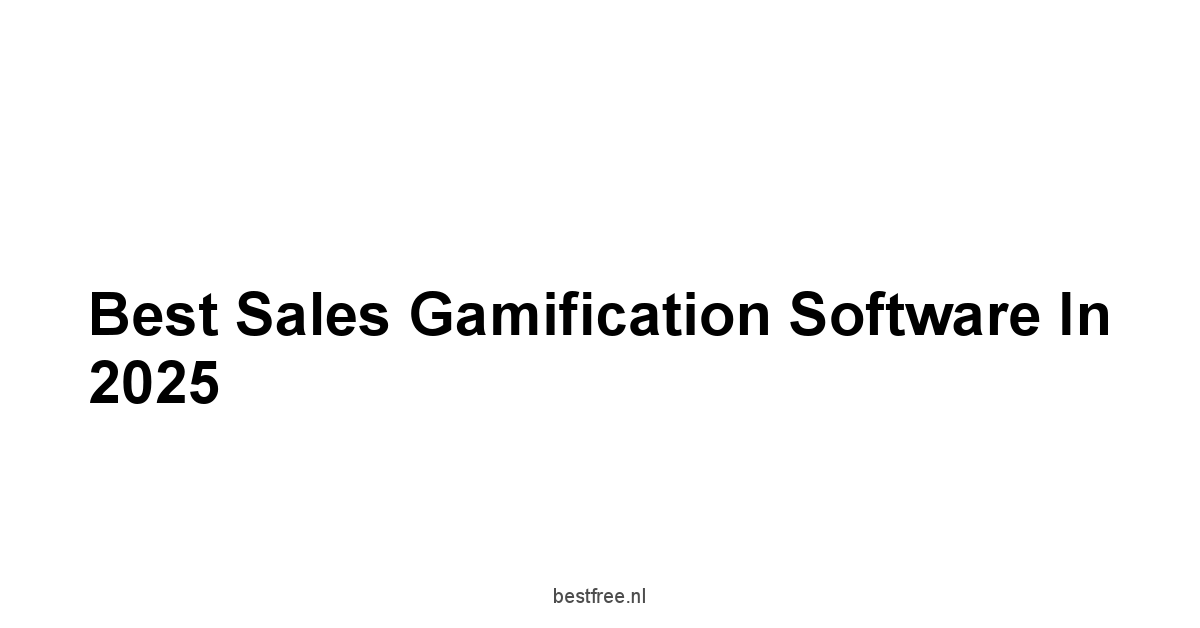




Leave a Reply